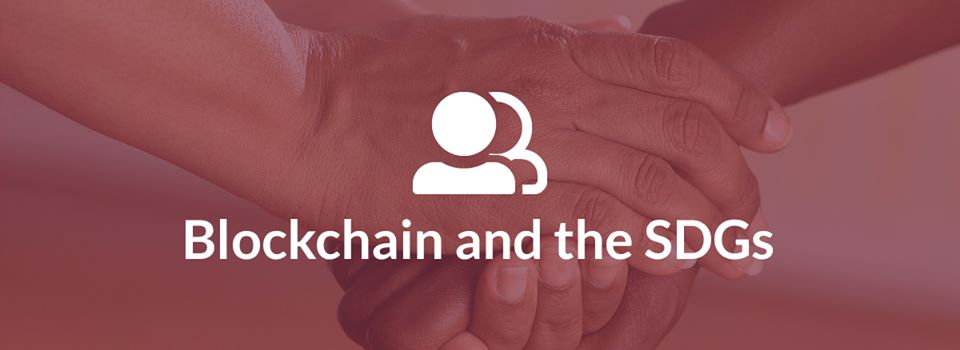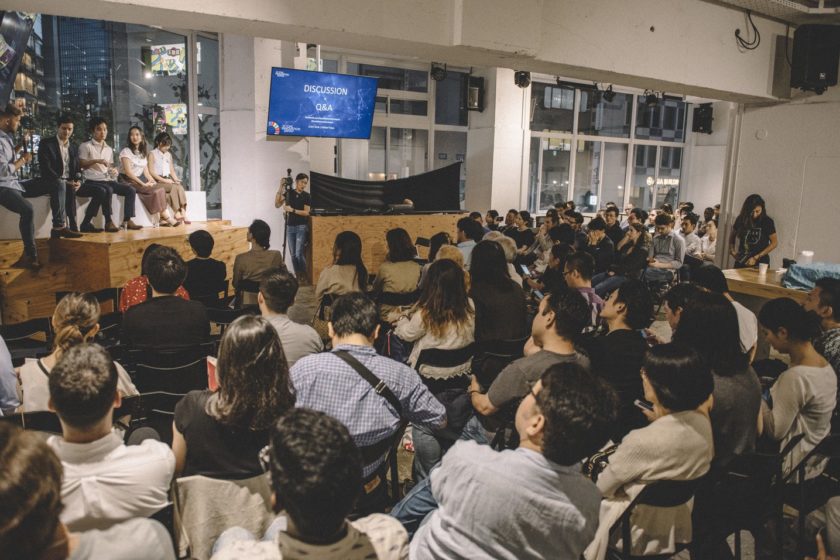By: Laura Marissa Cullell
Marketing & Operations Officer
Can technology progress human rights? Provide humanitarian aid? Help combat Climate Change? Address issues of identity, trafficking, and provide access to food?
The answer to these questions is yes. And Blockchain is a fantastic space to explore these issues right now.
In the last article of our series on Unique and Interesting Use Cases for Blockchain, I explore some of the applications of blockchain to achieve the UN Sustainable Development Goals. Part I explored just some of the use cases of this innovative tech in the oil and gas industry. Part II saw the possibilities for blockchain in the Music Industry. Part III looked at the possibilities of blockchain in healthcare.
For the past couple of months, I’ve been working on my thesis on Blockchain, Human Rights and International Law for the U.N. Mandated University for Peace. I have had the chance to learn about a plethora of innovative projects, pilots, and ideas that human rights activists are currently working on to make the world a better place. Is it lucrative? Not always. But it does help make a tangible difference.
Here are some of the most interesting applications of Blockchain for Social impact, more specifically how this innovative technology addresses some of the Sustainable Development Goals.
Blockchain Technology and the UN: The Sustainable Development Goals
For those that are unfamiliar, in 2015, all 193 members of the United Nations unanimously passed a resolution implementing a 15-year plan of achieving 17 Sustainable Development, global goals by 2030 (SDGs). Each of these goals has targets to achieve, totalling 169 different targets. The SDGs cover a broad range of social and economic development issues including poverty, hunger, health, education, gender equality, clean water, sanitation, energy, environment, and social justice.
SDG No. 2: Eradication of Hunger
World Food Programme — Building Blocks
UN Aid programs have been wrought with countless cases of fraud, red tape, hefty administrative fees and mismanagement of funds. In order to provide the maximum amount of aid to those who need it the most, the World Food Programme (WFP) implemented a pilot project in 2017 called Building Blocks. It was an early experiment that enabled the transfer of WFP Food and cash on a public Ethereum blockchain through a smartphone app to vulnerable families in Pakistan, addressing SDG Goal №1 and 2- poverty and hunger.
Within months, the WFP expanded the pilot to a Syrian refugee camp in Azraq, Jordan to successfully facilitate cash transfers for over 10,000 Syrian refugees on its blockchain payments platform. According to CCN, the implementation of blockchain technology also enabled Syrian refugees to buy food from local retailers using a biometric scan of their eye where each transaction was recorded on a blockchain, rendering the use of cash, bank cards, and paper vouchers obsolete. In this case, the refugees did not need to share any sensitive data with banks or mobile operators, benefiting from greater security and privacy through an immutable, secure blockchain.
Now, the World Food Programme is currently expanding its Ethereum-based blockchain after saving millions of dollars in bank transfers by utilizing decentralised blockchain technology. Currently, the WFP feeds over 100 million people across 80 countries.
SDG No. 5: Gender Equality and Identity
UN Women: Blockchain Simulation Lab
UN Women is the only UN organ that was founded in the 21st Century. This organ of the UN is dedicated to gender equity and the empowerment of women and was established to accelerate progress of meeting their needs worldwide. Their focus is on increasing women’s leadership and participation, ending violence against women, engaging women in all aspects of peace and security processes,and making gender equality central to national development planning and budgeting.
From January 29 — February 1, 2018, UN Women hosted a 4-day blockchain simulation lab in order to create launching points of achieving goals like gender equality, and ending hunger and poverty. Successful programs from this lab would become part of larger UN initiatives including the UN Women’s Global Flagship Programmes for Disaster Risk Reduction.
The Blockchain simulation lab addressed humanitarian scenarios around identity. For stateless refugees, for example, identity isn’t limited to documentation. According to Jordan Daniell, Blockchain could provide a platform where storing identification documents as a viable way of proving their identity, in a humanitarian scenario. Daniell believes that authorities could also identity women or girls who have been trafficked or who have gone missing.
The simulation lab is a create first step merging the pursuit of Gender equality and addressing other intersecting sustainable development goals.
The winners of this hackathon was Olivier Mukuta and his team. As social innovators from the Congo, and with experience in refugee camps on Malawi, they developed VIPI Cash — an app that uses blockchain to enable secure money transfers among women entrepreneurs. This gives them absolute control over their own money, independent of any male members in their family.
Other winners of this hackthon included Digital Grab Bag — a secure place on blockchain built with Syncano where refugees can collect identity data which can be verified by trusted people their journey, and Diwala — a decentralized platform that verifies people’s skills and provides a digital verified CV.
SDG No. 13: Climate Action
International Union for Conservation of Nature (IUCN): The Green List
The International Union for Conservation of Nature (IUCN) is a membership Union uniquely composed of both government and civil society organisations. It provides public, private, and non-governmental organisations with the knowledge and tools that enable human progress, economic development, and nature conservation to take place together.
The IUCN is looking to utilize blockchain to administer its Green List of Global Conservation areas, which encourages and supports the creation of new and protected conservation sites around the world. Blockchain offers a reduction of bank fees, more transparency about Green List funding, and progress towards meeting its goals.
James Hardcastle, the IUCN’s programme believes that many of these protected areas don’t have an abundance of money at their disposal so reducing financial friction and transaction costs diverts more money into preserving ecosystems. This way, the IUCN can guarantee that donor funds go straight to the site they want to help.
Blockchain is also said to possible improve the system of carbon asset transactions. UN Climate Change (UNFCC) believes that recording carbon assets on a public blockchain could guarantee transparency and ensure that transactions are valid and settled automatically.
SDG No. 16: Peace, Justice and Strong Institutions
ID2020 and Digital Identities
Article 6 of the Universal Declaration on Human Rights stipulates that “Everyone has the right to recognition everywhere as a person before the law.” The Sustainable Development Goals (2015–2030) include target 16.9 which aims to “provide legal identity to all, including birth registration, by 2030.” ID2020 believes this must include the >20M refugees worldwide and seeks to provide.
ID2020 is an alliance of governments, NGOs, and the private sector, along with the UN High Commissioner for Human Rights. All of these entities seek to use blockchain technology to give refugees a digital identity. They have currently teamed up with Accenture and are looking at rolling out an inter-operable, user-owned and controlled digital identity to its hundreds of thousands of staff. They hope that this initiative will evolve to a standard background check which can be distributed to potential clients using a biometrics system that can manage data on fingerprints and irises.
Improvements on failed Governance Models
One of the biggest advantage of using blockchain technology lies in its’ governance mechanisms. Blockchains enable trust which would, in turn, help mitigate corruption. Current international and domestic governance models are wrought with bureaucracy, red tape, and inefficiencies, which hinders access to these key governance structures.
The UNDP proposed a model of Good Governance which provides a cursory framework for how governments should operate:
- Participation — all citizens have the right to an equal voice in decision making
- Rule of Law — fair an impartial legal frameworks specifically regarding human rights.
- Transparency — based on free flow of information, where processes, institutions and information is always readily accessible.
- Responsiveness — Institutions and government agencies serve all stakeholders.
- Consensus Orientation — acknowledging differing interests and attempts to reach a broad consensus on what is in the best interests of the group and (where possible), on policies and procedures
- Equity — All citizens regardless of gender, have opportunities to maintain their well-being
- Effectiveness and Efficiency — Allows both processes and institutions produce results that meet needs while making the best use of resources
- Accountability — where decision makers in government, the private sector, and civil society organizations are accountable to the public as well as to institutional stakeholders.
Blockchain strengthens trust, and promotes information sharing between institutions and the public. It can have an impact on democratic voting models and promote the principles of good governance.A blockchain operates on the principles of consensus, accountability and transparency between all parties.
According to Guillaume Chapron, “Local communities could be empowered to manage their natural resources through ad hoc voting. For example, fish might be traded on a platform only if harvest quotas were approved by a community-based democratic process.”
By digitizing governance models and facilitating the creation of digital societies, such as e-Estonia, achieving access to just and peaceful institutions is definitely attainable.
Challenges with the Technology
Blockchain is still in its exploration and infancy phase and may not be suitable for every UN/International humanitarian Agency. For Toni Caradonna, Chief Innovation Manager at the Porini Foundation, ‘Blockchain for Good’ offers great potential, but cannot be viewed in isolation as a silver bullet for all the world’s pressing issues.
“Blockchain can give transparency, efficiency gains and independence from banks, but we still need cooperation from legislators. Blockchain alone cannot solve the problem of people who feel free to pollute thinking that someone else will come along and clear up the mess.”
State-level and international policy networks need to adapt and allow for innovations while providing adequate legislation that provides a base-level guidance on what can and can’t be accomplished with Blockchain.
It’s also hard to ignore the technical challenges. Bitcoin, for example, is slow. Ethereum is an improvement but more are required before it can be universally applied. It’s also important to note that to err is human, and if someone were to lose their cryptographic key, or access to a blockchain, there is not way to retrieve it again.
With the ongoing blurring lines between the real and digital world, there have been increasing concerns of data ownership and access to services. With all of these innovations, there needs to be adequate protections in place to protect the identities of refugees or stateless individuals.
There is also the issue of the digital divide. This term has typically referred to the gap between those who have access to certain technologies and those that do not. Many developing countries do not have the adequate infrastructure or ability to provide with high-speed internet or digital accessibility. All humanitarian efforts with blockchain are moot if sustainable, cost-effective, long-term solutions cannot be adopted.
Blockchain and the progression of Human Rights
Kobina Hughes believes that blockchain presents an opportunity for the Internet development community to claim a degree of recognition in the human rights realm.
It only makes sense that technology is being utilised to promote gender equality and address current social concerns in ways that are only able to be explored now due to innovations in technology.
The fact that Blockchain is currently being adopted by governments and international organs is a wonderful first step at utilizing technology for promoting human rights for all.
Laura Marissa Cullell is the Marketing & Operations Officer at BlockX Labs. She is a MA Graduate of the UN University of Peace in International Law and Human Rights. She loves puns, glitter, and reading an obscene amount of books.
First published at https://medium.com/hackernoon/blockchain-and-the-sustainable-development-goals-c51c52e0af28
Also, read:
How Blockchains can tackle the SDGs
Is Blockchain answer to ending poverty?




